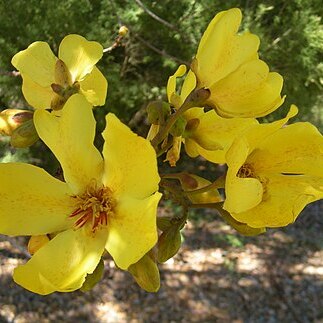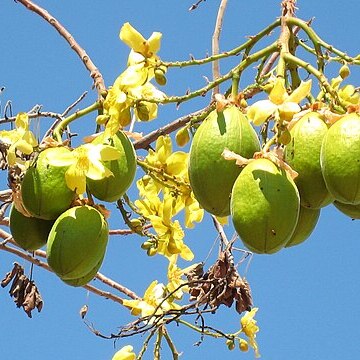Shrub or tree to 6 m. Branchlets velvety to subglabrous. Leaves 3–7-lobed up to ½ length, glabrous or velvety; lamina mostly 5–10 cm long, 7–15 cm wide, cordate at base; lobes ovate, often broad and shallow, rounded, crenate to almost entire; petiole 6–13 cm long; stipules 1–2 mm long. Inflorescence up to 30 cm long; bracts scale-like. Flowers 5.5–8 cm diam. Sepals ovate, strigose to glabrous, the outer 7–10 mm long, 4–7 mm wide, the inner 10–16 mm long, 6–15 mm wide. Petals 3–4 cm long. Staminal filaments yellow; anthers 2–3.5 mm long; basal pores small or none. Capsule ovoid, 5.5–8 cm long.



